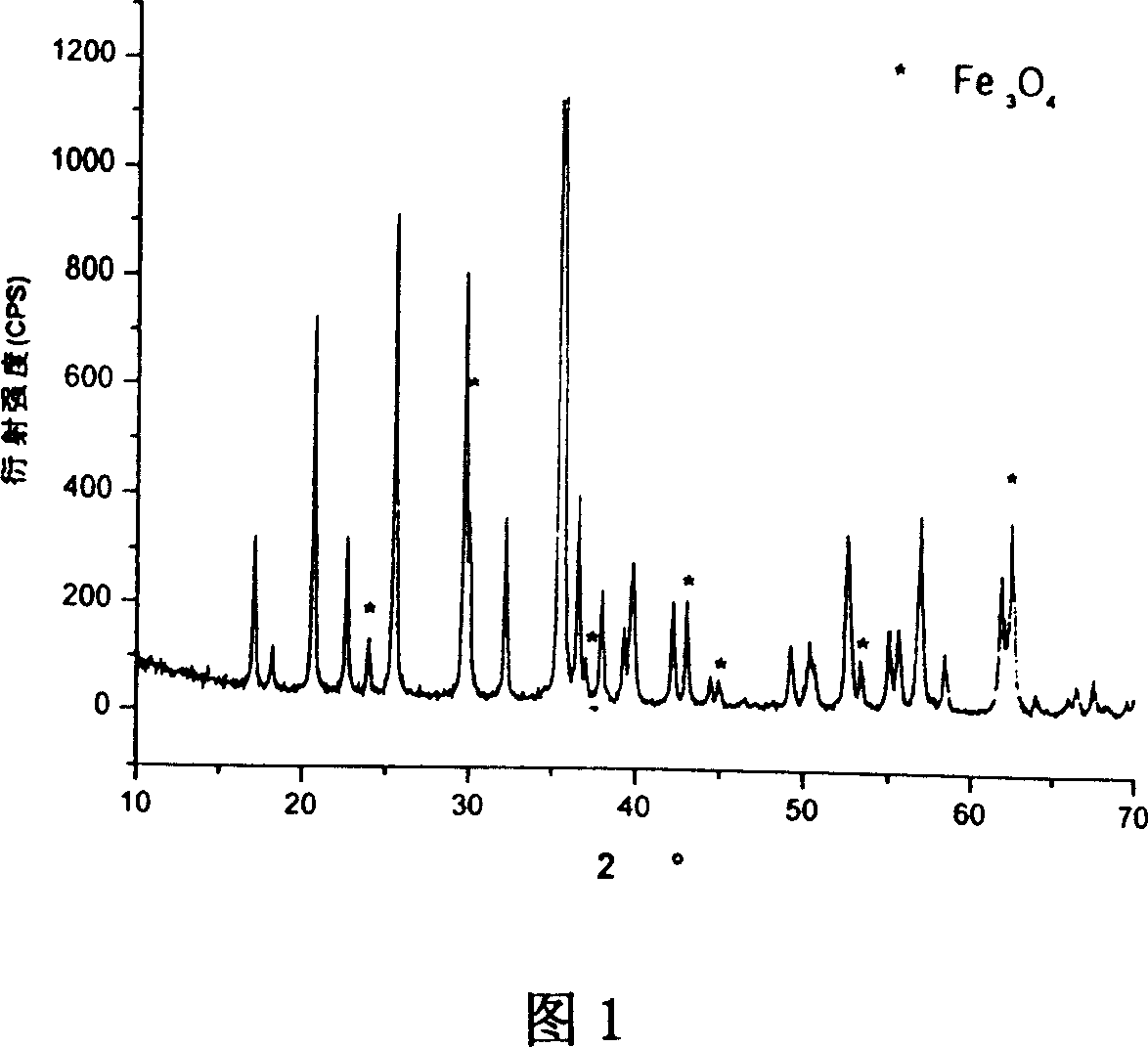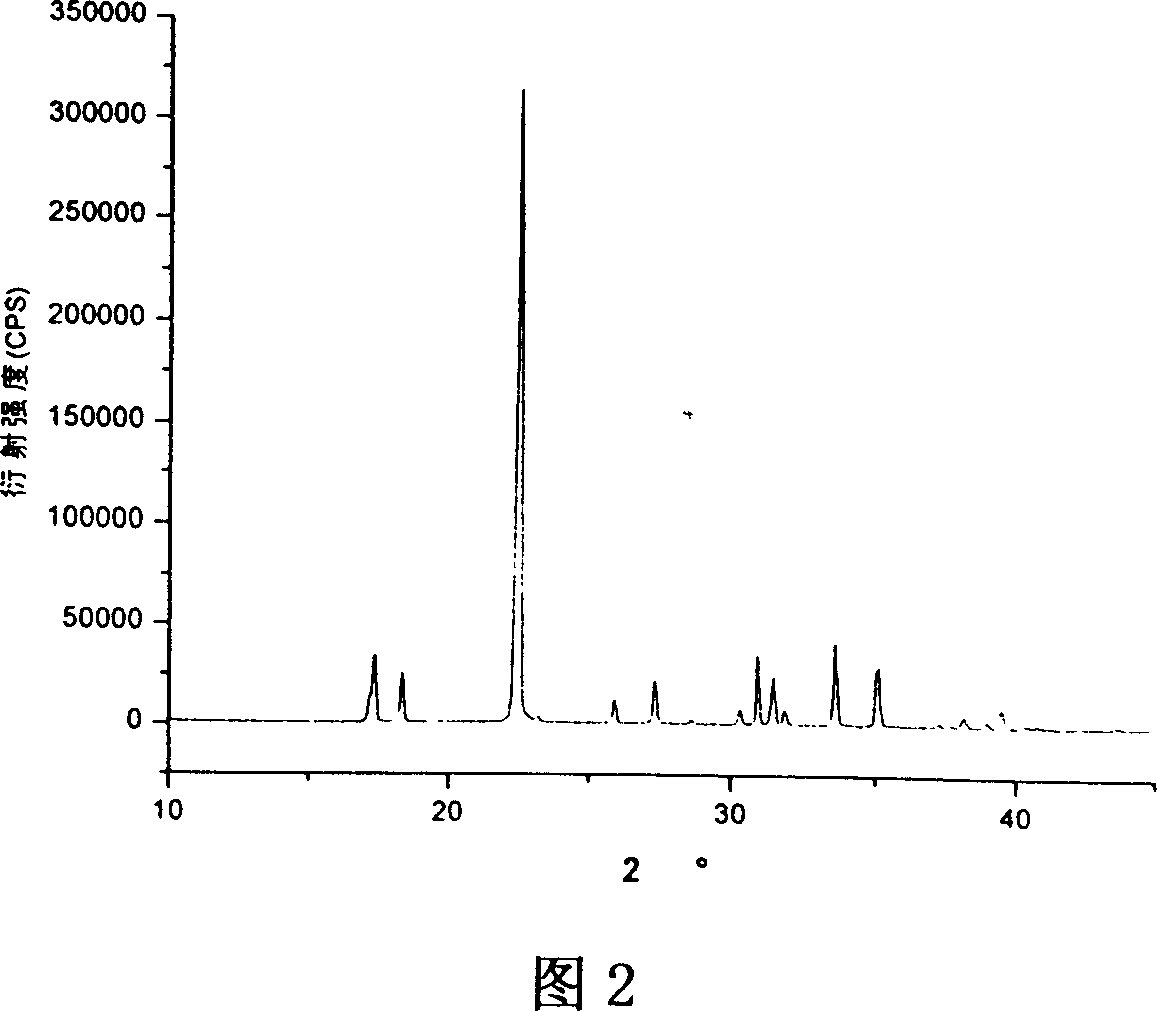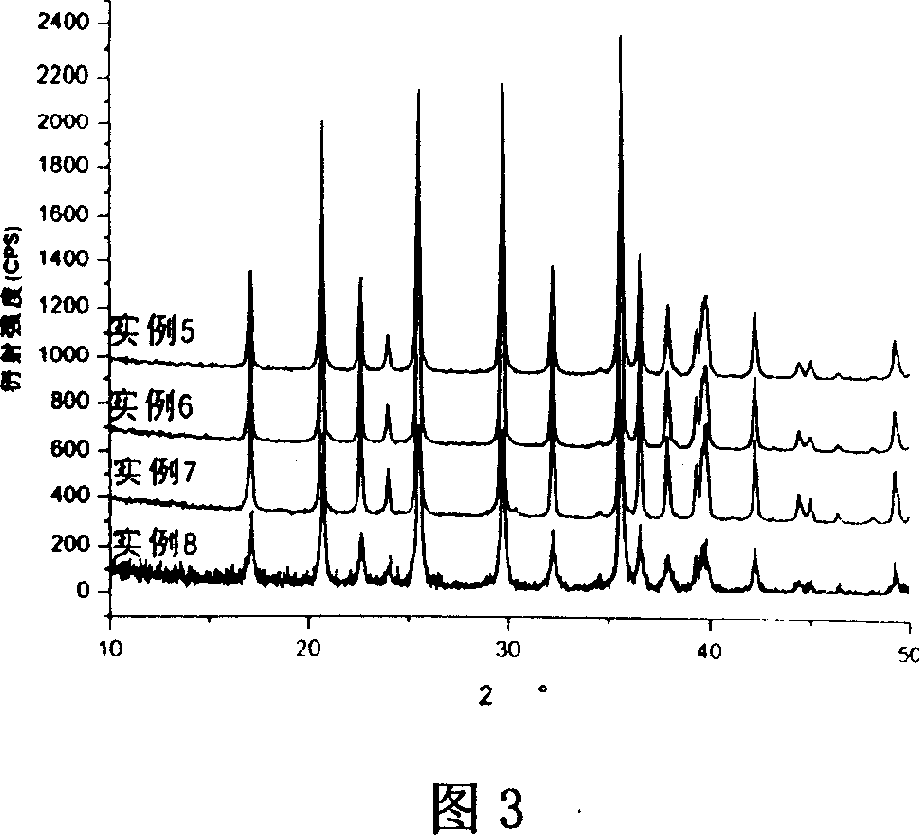Method of synthesizing iron lithium phosphate by vacuum carbon heating reduction
A technology of lithium iron phosphate and reduction method, applied in chemical instruments and methods, phosphorus compounds, inorganic chemistry, etc., can solve the problems of ammonia gas generation, unfavorable environmental protection, etc., achieve low synthesis temperature, excellent electrochemical performance and physical performance , the effect of low reaction temperature
- Summary
- Abstract
- Description
- Claims
- Application Information
AI Technical Summary
Problems solved by technology
Method used
Image
Examples
preparation example Construction
[0026] 1) Preparation of lithium dihydrogen phosphate containing doping elements.
[0027] Lithium hydroxide monohydrate or lithium carbonate or lithium acetate and a compound of doping elements are placed in a ball mill, and then an appropriate amount of water is added for ball milling to make a lithium salt slurry with a solid-to-liquid ratio of 1:1-1:5 (mass Ratio), and then control the flow rate to put the slurry and the phosphoric acid solution with a concentration of 0.1-5.0mol / L into a self-made reaction tank, stir while reacting, and the overflowed solution is concentrated and crystallized to obtain the mixed Heterolithic lithium dihydrogen phosphate. Wherein the molar ratio of raw materials used is: the molar ratio of monohydrate lithium hydroxide or lithium acetate or lithium carbonate and phosphoric acid and the compound of doping element is 0.95-1.05 (monohydrate lithium hydroxide or lithium acetate) or 0.475-0.525 (carbonic acid Lithium): 1.0: 0.1-0.01.
[0028]...
Embodiment 1
[0030] Example 1: Will contain LiOH·H 2 O 4.11 g (or Li 2 CO 3 3.69 g or lithium acetate 6.59 g) and Mg(OH) 2 0.0583 grams (or magnesium acetate 0.142 grams or magnesium carbonate 0.084 grams or MgC 2 o 4 2H 2 (0.148 grams) of 10 grams of slurry injection containing 32.67 grams of phosphoric acid solution (containing 9.8 grams of phosphoric acid, concentration 30%) in the reaction tank, concentrated crystallization after the reaction 1-10h made containing Mg 2+ Lithium dihydrogen phosphate crystals.
Embodiment 2
[0031] Example 2: will contain LiOH·H 2 O 4.11 g (or Li2 CO 3 3.69 g or lithium acetate 6.59 g) and Al(OH) 3 0.0781 grams of 10 grams of slurry are injected into a reaction tank containing 32.67 grams of phosphoric acid solution (containing 9.8 grams of phosphoric acid, concentration 30%), concentrated and crystallized after 1-10 hours of reaction to obtain Al 3+ Lithium dihydrogen phosphate crystals.
PUM
 Login to View More
Login to View More Abstract
Description
Claims
Application Information
 Login to View More
Login to View More - R&D
- Intellectual Property
- Life Sciences
- Materials
- Tech Scout
- Unparalleled Data Quality
- Higher Quality Content
- 60% Fewer Hallucinations
Browse by: Latest US Patents, China's latest patents, Technical Efficacy Thesaurus, Application Domain, Technology Topic, Popular Technical Reports.
© 2025 PatSnap. All rights reserved.Legal|Privacy policy|Modern Slavery Act Transparency Statement|Sitemap|About US| Contact US: help@patsnap.com



